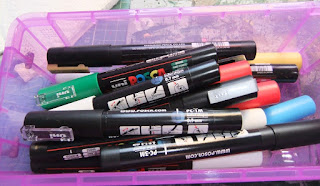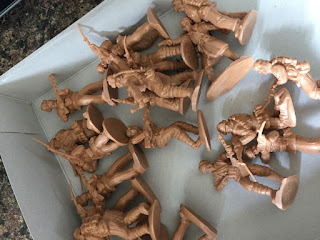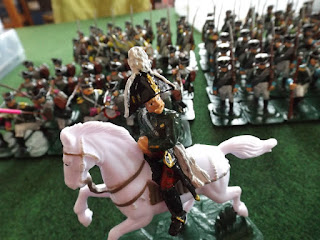As I'm already a big fan of the Command & Colours series of games, when I heard that Tricorne, the version covering the American War of Independence had been published I didn't think too hard before placing my order. As regular readers will know, I view C&C as a toy soldier game and play the Napoleonic and ACW versions with 15mm toys and the Ancients wersion with 25mm toys - all on Hexon terrain with it's 4-inch/10cm hexes.
All very well, but I don't have any suitable toys for AWI and any I do paint will be in 54mm. Then I remembered my Irregular 2mm blocks which I originally acquired about 15 years ago for use with Richard Brooks's Minischlacht and Terrible Swift Rule games. By re-purposing most of the figures I had already painted I managed to cobble together enough troops to play the (chronologically) first scenario.
Here is the game setup. Graham led the wicked rebels (left) while John commanded the colonial oppressors.
Some of the terrain was a bit of a lash-up. Here are the Continental earthworks on Breed's Hill. And I forgot some of the actual hill. Ah well.
The British left. While the bases of the Continentals were edged in pale blue, the Brits used red. Light troops have a green stripe on the left of the base, regulars blue, militia yellow.
The woods were made from cork tile with green felt glued atop. They looked surprisingly effective.
Continental riflemen skulking in Charleston.
HMS Lively - a 20-gun vessel bombarded Charleston at one point. This is a 30+ year-old 1/3,000 model kindly provided by John.
As the enemy were largely dug in, the Brits decided to advance.
So how different is Tricorne from other C&C games? Surprisingly so. It does a very neat job of replicating the flavour of linear warfare. Infantry unite exchange fire in the hope that the enemy will run away! Rolling a flag on the combat dice means, as usual, that the target must retreat (unless supported, with leader etc) but then the retreating unit rolls again. This time a
failure to roll a flag means that the unit keeps on running. Not that you'd know it from my bungled explanation but it does get pretty tense!
Play proceeded fairly slowly as we adapted to the new game systems and troop types. We were hampered by the absence of Martin and Jerry who - the only ones who can be relied upon to read and understand rules! We wound up at a convenient point with the Brits trailing by 2 banners to 4 and accepting that they weren't going to win.


























































